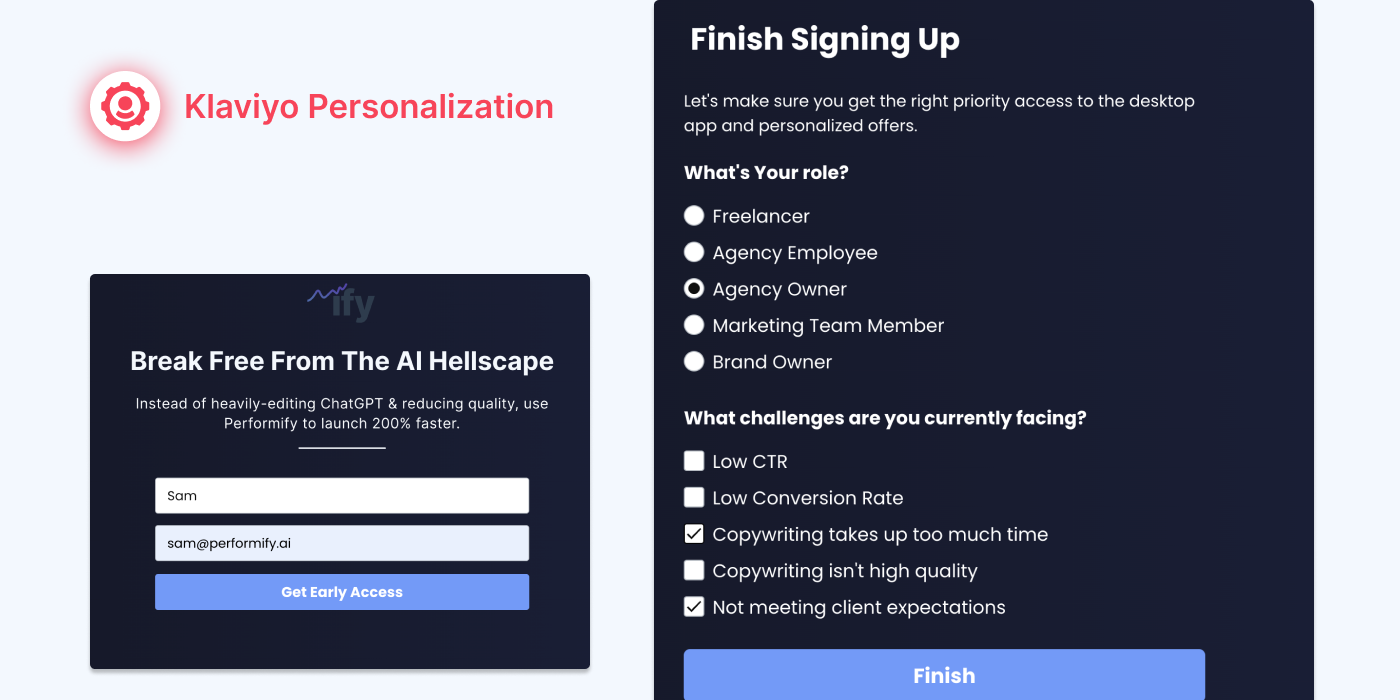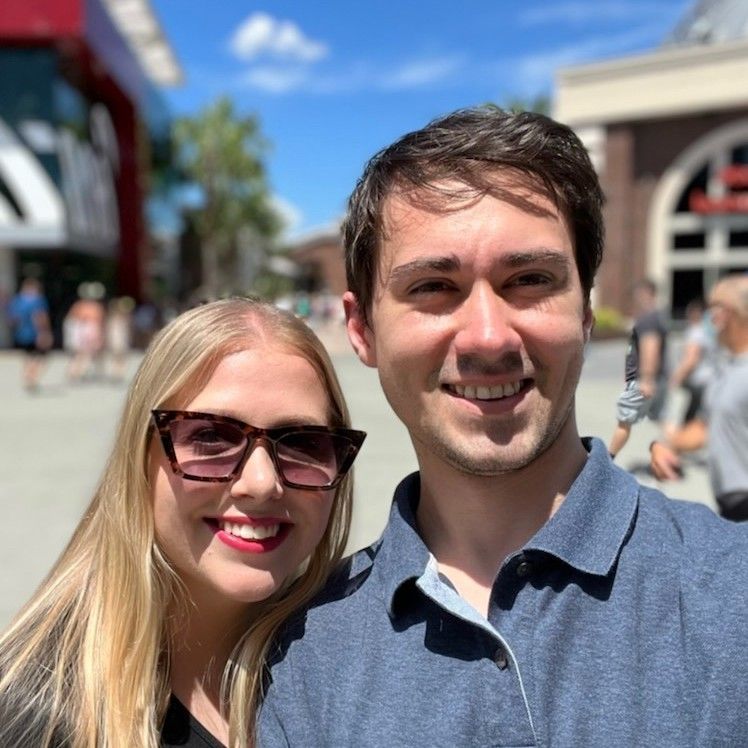Aside from building Performify, I run a conversion rate optimization (CRO) marketing agency.
We’re a small agency. Mainly because we want to focus on quality of work and getting the best results for our clients.
But when I first started my marketing agency, I was doing everything.
From setting up lead capture forms, to running ads, to doing data analysis.
It was exhausting, so we started cutting back on our service offerings, and started to only focus on services that would really move the needle for our clients:
- Performance optimization
- Personalization at scale
We stopped being a jack-of-all-trades and started automating our process at the same time.
Performify was born out of the tools we developed to personalize marketing content for clients.
I wanted marketers, like you and I, to have access to the same tools that helped me build a successful business.
I figured that if I can help you achieve success, then Performify will also succeed in becoming one of the top AI lead generation platforms.
So why does any of this matter?
Because lead capture forms are the gateway to successful marketing, this should be a priority for you.
In this article, I’ll share with you
real strategies to optimize your lead forms for higher conversion rates and personalization at scale.
The Importance of Klaviyo Forms
You need a good lead capture form to have a successful marketing strategy, especially if your goal is to have a high conversion rate.
I’ve been a CRO specialist for almost a decade now and out of all the shiny objects, I still think web forms are one of the most important parts of performance marketing.
Forms are the gateway to collecting the first-party data you need to create:
- Personalized customer experiences
- Powerful audience segments
- High open rates and high click-through rates (CTR).
Learn more about
Klaviyo's form personalization features.

The Power of Klaviyo For Email Personalization
At my agency, one of our core services is personalization, because it’s proven to be a powerful driver for increasing conversion rates, for one simple reason:
Personalized offers are more relevant. Plus, your customers like this approach.
Look at it from the consumer’s perspective:
- The offer presents a real solution to the problems their facing
- The imagery matches their preferences
- The product you’re selling them is one that they’re interested in
People are in search of quality products, not irrelevant messages clogging their inboxes.
Why use Klaviyo?
Klaviyo is an email marketing platform that started in 2006 but has been growing rapidly just in the past few years.
At the time of writing this, Klaviyo is preparing to IPO.
Klaviyo offers some cool features for email marketing like:
- Automated email sending flows
- Email list segmentation
- 1-click SMS subscribe buttons
- Dynamic text replacement (DTR) for things like “first name”.
But their custom forms are the sole reason that these features are possible.
Without these forms, you couldn’t achieve DTR personalization or even advanced audience segmentation.
This is possible because their forms allow you to create custom fields.
Custom fields allow you to ask page visitors for detailed information like “What are you struggling with the most?” or “What products have you tried in the past?”.
This information can be powerful for boosting open rates and getting more conversions.
Example of Cold Email Personalization
Salespeople are usually pretty personable. They ask questions, they relate to the client’s struggles, and they sell the features that matter to the person they are talking to.
You can do that when selling in person or 1-on-1.
For us email marketers, personalization is the closest thing we have to recreating that personable sales experience.
Here’s an example of a cold email personalization for agency owners, who also struggle with meeting client expectations and time spent copywriting.
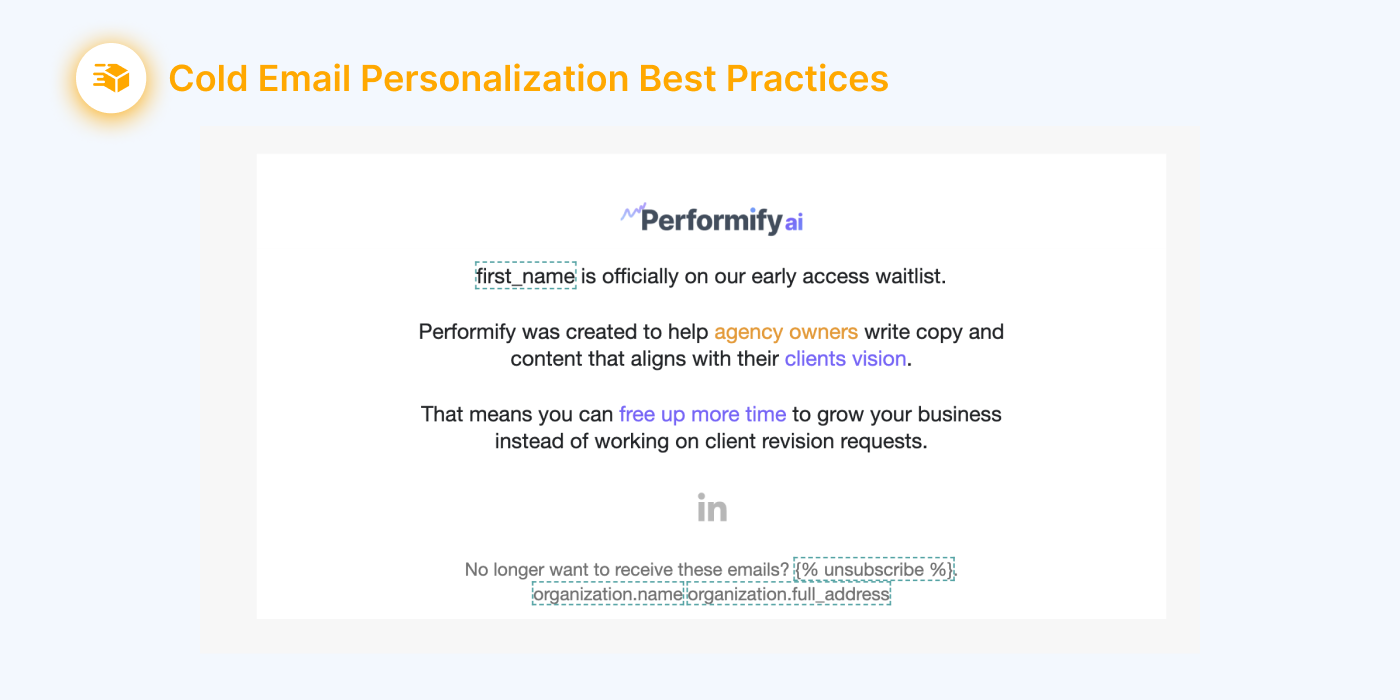
{{first_name}} is officially on our early access waitlist.
Performify was created to help agency owners write copy and content that aligns with their clients vision.
That means you can free up more time to grow your business instead of working on client revision requests.
Follow these 3 Steps to Start Personalizing Emails
1.) Build A Multi-Step Form That Uses Custom Properties
You can find a good example of web form personalization in action on Performify.
You’ll see that we start by asking for your name and email, and then after clicking the submit button, we prompt you to answer a few more questions.
You may ask, “But long forms are bad for conversions, right?” Wrong.
Our waitlist form has a 20% conversion rate when you combine the average between all of our site traffic (from Facebook ads to blog traffic).
The reason for the high completion rate is that we tell people the reason we are asking for that information.
Name & email are obviously needed to give someone app access.
But by telling them that the extra information helps us give them personalized offers and prioritize access, they don’t feel nervous about submitting the form.
2.). Confirm Your Custom Properties Are Working
Go back to Klaviyo, and look under the “Profiles” tab on the left-hand side.
You should see the information you collected from your form under custom properties.
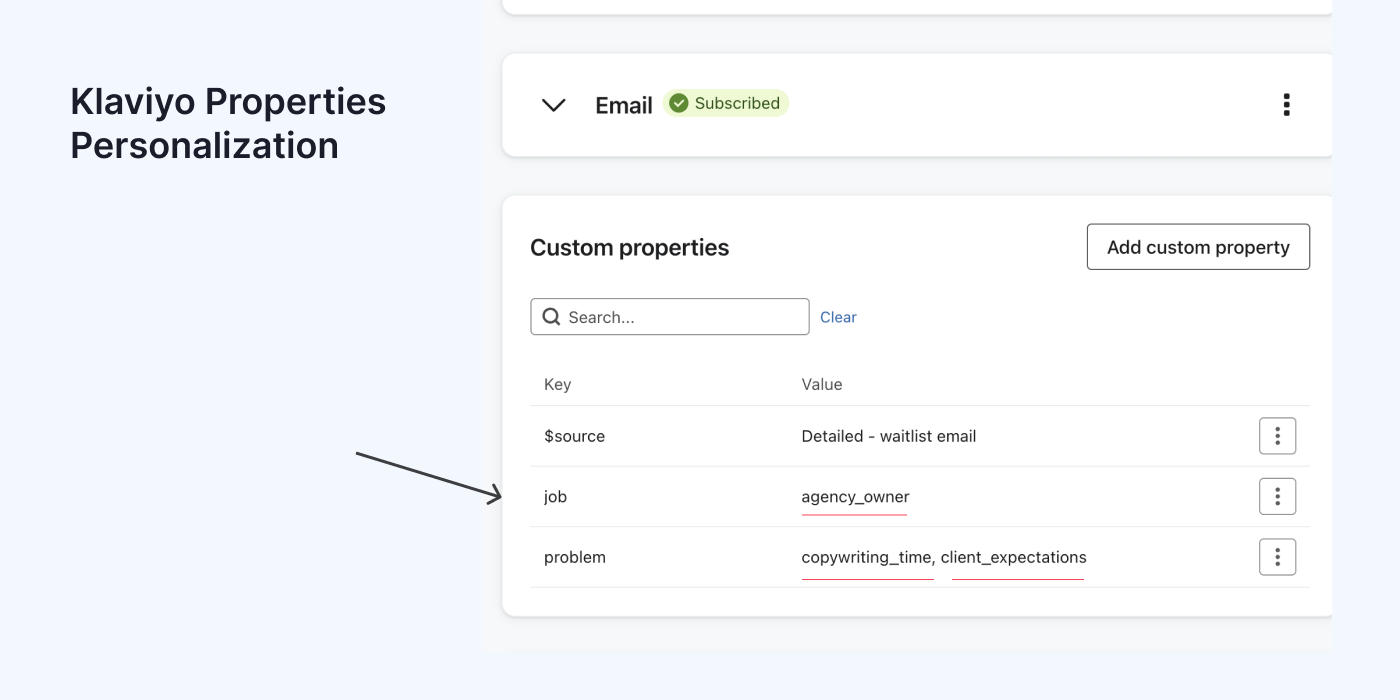
3.) Build Audience Segments Using Custom Properties
Now, in Klaviyo, go to the “Lists & Segments” Tab under “Audience” on the left-hand side.
From there you can start to build a new segment from new form submissions.
Feel free to get as granular as you want.
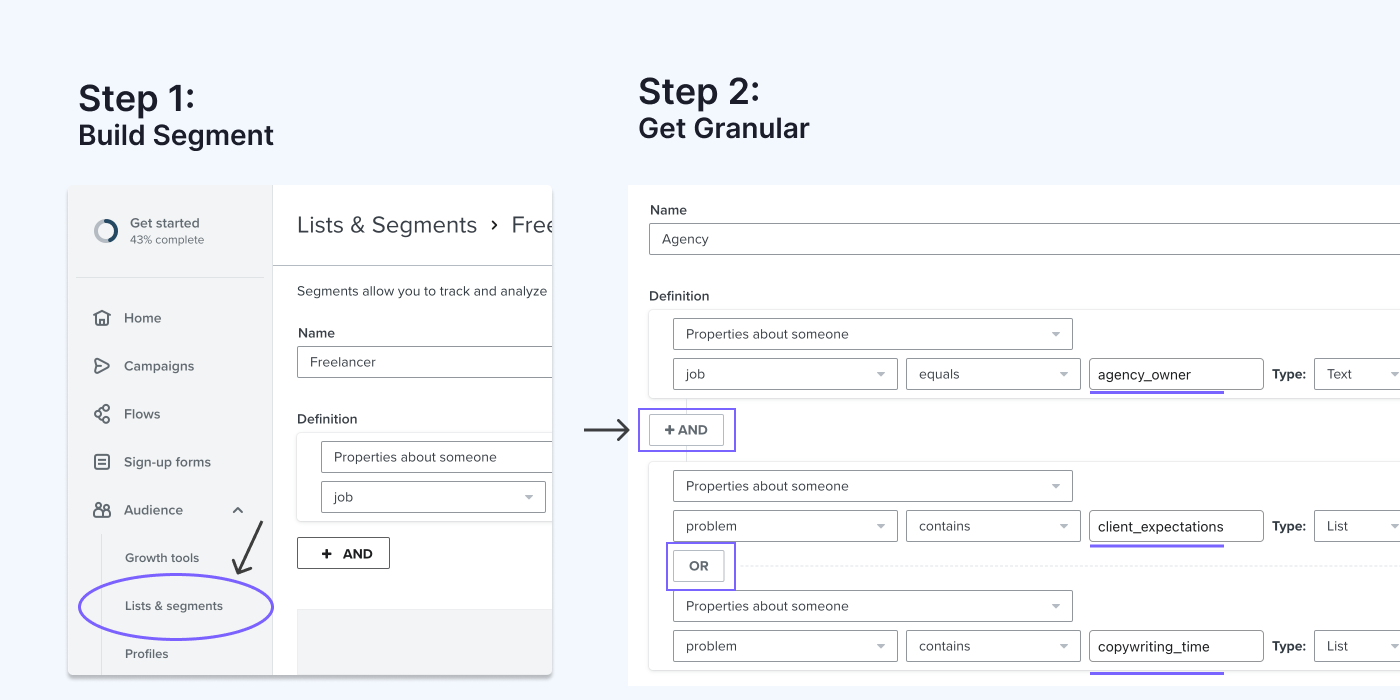
Klaviyo Email Personalization Best Practices
Surprisingly, personalization hasn’t come far in the marketing world. Klaviyo is really the pinnacle of personalized experiences at the moment, which is limited to emails.
Performify smart forms fix that by letting you set the messaging, offers, and pages your audience segments see across the entire funnel experience.
But it won’t be ready until late this year, after the launch of our personalized AI writer.
Here are some tips for email personalization in the meantime.
1.) Address Pain Points in Welcome Email
Just like the cold email example we gave you earlier, it’s important to speak directly to the user’s struggle.
Remind them why they signed up.
This primes them to look out for your next email, which has the side effect of increasing deliverability over the long term.
If you're a SaaS startup, you can say something like:
“{{company_name}} helps you avoid {{user_problem}} by using {{product_feature}} to eliminate time wasted by [The way your audience currently solves their problem]."
Or if your eCommerce store, try something similar to:
We first started{{company_name}} because we were tired of dealing with {{user_problem}}, even after trying dozens of products that promised to help.
But after years of trial and error, we found what works.
As a new member, we want you to experience {{desired_outcome}} as fast as possible, so we’re giving you a 20% off welcome coupon.
2.) Personalize The Offer For Different Klaviyo Segments
You can start your funnel with individual welcome emails, but for special promotions, you may want to go broad.
Instead of crafting a different message for every audience segment, use dynamic variables.
Most email providers offer this. A few that come to mind are:
- Kajabi
- Klaviyo
- Mailchimp
Here’s an example of how I would approach personalization for broad promotional emails.

Use Klaviyo Personalization for Better Email Marketing
Brands that fail to adapt to emerging marketing strategies (like personalization) risk alienating their customer base.
Rather than bombarding them with repetitive ads or spammy emails, use your 1st-party customer data to curate offers that they'll genuinely be interested in.
Latest Blog Articles
Comparisons
Performify vs MakeForms
Performify vs Tally
Performify vs Fillout
Performify vs Feathery
Performify vs involve.me
© 2024 Performify LLC.
All Rights Reserved


